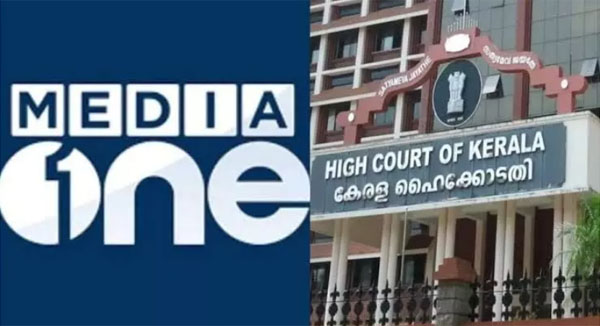
The Kerala High Court on Wednesday, March 2, upheld the ban on Malayalam TV channel MediaOne TV. The division bench of Chief Justice S Manikumar and Justice Shaji P Chali refused to lift the ban on the channel imposed by the Union government citing “security reasons”.
Madhyamam Broadcasting Limited, which runs MediaOne TV, had approached the High Court after a single bench refused to lift the ban on the channel.
On February 8, a single-judge bench of Justice N Nagaresh had upheld the ban imposed by the Union Information and Broadcasting (I&B) Ministry. The I&B Ministry did not renew the transmission licence of the channel after the Union Ministry of Home Affairs (MHA) refused to give security clearance to the channel, citing “security reasons”.
After perusing through files submitted by the MHA, the single-judge bench had observed that there were material and intelligence reports supporting the ban on the channel.
The court observed that there was sufficient grounds for denying permission for renewal of the channel’s licence.
In 2020, the channel had faced a 48-hour ban in connection with its reporting of the Delhi riots that year.
“Based on the inputs from various intelligence agencies, the MHA had formed a committee of officers, which found that the security clearance for the channel should not be renewed. The MHA also considered the entire facts and decided to accept the recommendations of the committee of officers. I find that there are inputs which justify the decision of the MHA. Therefore, I propose to dismiss the petition,” the judge said.
“I am not inclined as the issue involved national security matters. I have acted on the appeal in an interim order hoping that I would find something to interfere. Now seeing the files (MHA), it would not be proper for me to extend the stay even for one hour. I understand the situation of employees and business. But what is involved is a matter of security,’’ said the judge.
“As far as the Pegasus judgment is concerned, it has been passed in the view of the right to privacy. Whereas the other judgment in Digi Cable Network would sparsely apply to the facts of this case. Therefore, I am dismissing this writ petition (challenging the ban on transmission of Media One TV),” he added.
As the 10-year permission for MediaOne TV was to expire on September 29, 2021, the company applied for its renewal for another 10 years in May last year. On December 29, 2021, the MHA denied security clearance to it, and on January 5 this year, the ministry served a notice seeking to know why its application for renewal of permission should not be closed in view of the denial of security clearance.
On January 31, the ministry issued the order barring the channel’s transmission. Hours later, the channel’s management moved the High Court which, in an interim directive, deferred the implementation of the ban order. Subsequently, the court directed the MHA to submit the relevant files before it on February 7.
The Centre had told the court that “the Ministry of Home Affairs has informed that denial of security clearance to the TV channel based on intelligence inputs, which are sensitive and secret in nature, therefore, as a matter of policy and in the interest of national security, MHA does not disclose reasons for denial”.
The central government said in a situation of national security, a party cannot insist on strict observance of the principles of natural justice. In such cases, it is the duty of the court to read into and provide for statutory exclusion, if not expressly provided in the rules. Depending on the facts of the particular case, it will, however, be open to the court to satisfy itself whether there were justifiable facts, and in that regard, the court is entitled to call for the files and see whether it is a case where the interest of national security is involved, it said.





Comments
Then there is enough ground to ban Sudarshan Channel, which promotes hatred and gives rise to hindu terrorism.
Add new comment